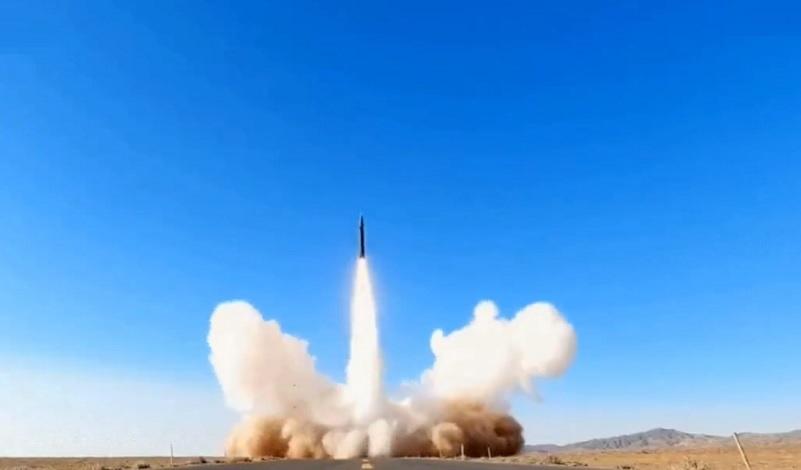The Chinese People’s Liberation Army launched a Dongfeng-17 (DF-17) medium-range hypersonic missile armed with a DF-ZF Hypersonic Glide Vehicle, 120 km from Taiwan. The release part of longer video comes amid increased tensions with the U.S. House of Representatives Speaker Nancy Pelosi’s expected visit to Taiwan. China rapidly deploys DF-17 medium-range hypersonic missile systems to the coastal areas of Fujian province, which is the closest to Taiwan. China moves more military equipment on the edge of the Taiwan Strait. The last time this happened was during the Taiwan Strait crisis in 1996. Four U.S. warships, including an aircraft carrier, were positioned in waters east of Taiwan on what the U.S. Navy called routine deployments on Tuesday.

The Dongfeng-17 (East Wind-17′), is a Chinese solid-fuelled road-mobile medium-range ballistic missile[3][1] that mounts the DF-ZF Hypersonic Glide Vehicle. The DF-17’s hypersonic armament gives China significant leverage over current conventional ABMs due to the glide vehicle’s unpredictable trajectory. The DF-17 along with the DF-ZF, was officially unveiled at the National Day military parade on 1 October 2019, making this China’s first operational hypersonic weapon systems and one of the world’s first to be put in full initial operation. In March 2020, the United States Department of Defense proposes to accelerate the development of conventionally armed hypersonic glide vehicles (HGV) to keep pace with the Chinese development.

The DF-17 uses the rocket booster from the already operational DF-16B short-range ballistic missile. As such, the design of the missile itself did not require any major changes. The biggest change however, is the obvious usage of a hypersonic glide vehicle rather than a conventional re-entry warhead(s) found in normal ballistic missiles and MIRVs. The DF-ZF HGV operates in a different manner from normal ballistic missiles or even intercontinental ballistic missiles in the first place. Rather than firing and landing in a normal arc, the DF-17’s HGV suppresses its trajectory and accelerates to reach Mach 5. Due to its suppressed, lower altitude trajectory, intercepting the glide vehicle with ABM shielding becomes far harder and more complex than that of a conventional re-entry vehicle.

The DF-ZF is a Chinese hypersonic glide vehicle (HGV), previously denoted by the Pentagon as WU-14. This is further complicated, as the gliding makes the DF-ZF far more maneuverable; extending both its range and avoiding potential ABM shielding. As such, the DF-17 could hit regional targets despite its SRBM nature. The DF-ZF is thought to reach speeds between Mach 5 (3,836 mph (6,173 km/h; 1,715 m/s)) and Mach 10 (7,680 mph (12,360 km/h; 3,430 m/s)).[8] The glider could be used for nuclear weapons delivery but could also be used to perform precision-strike conventional missions, which could penetrate “the layered air defenses of a U.S. carrier strike group. The DF-17 can also be used to mount a more conventional re-entry vehicle than the DF-ZF.
?? The Chinese are getting excited about this Pelosi and Taiwan.
The first official video of the launch of the new mobile hypersonic tactical ballistic missile DF-17. pic.twitter.com/YuAzvc4FSh
— Ignorance, the root and stem of all evil (@ivan_8848) July 30, 2022














